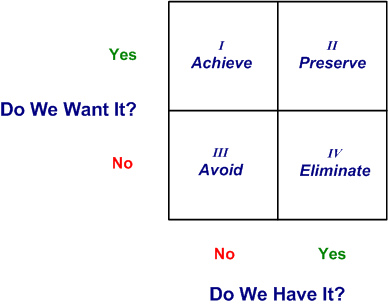
In my previous posts, I have been stressing the importance of feedback and reflection. In a nutshell, you can say that without feedback, there is no learning or progress.
So if you are interested in the people around you actually growing and developing, you need to give them feedback.
But what about you, where are you getting your feedback?
If you are very lucky, you have a great boss who understands all this and who provides both coaching and mentoring for you.
Alas, for many of you, that is not the case.
What about the team then? Only in the best of cases can you rely on your followers to provide feedback in the positive, constructive way that you actually need to improve at anything. Ask your followers: “How am I doing as your boss?” Put your people in a very difficult position, unless there is an exceptionally high level of trust. The one question that sometimes produces relatively honest feedback is: “Is there anything in your view that I could do differently and that if I did would make your life/job easier?
But most of you will need to source your feedback in other ways if you want to make sure that you are continuing to learn and grow.
As one manager said me to yesterday, “It’s frightening I just realised that at some point, way back, maybe 10 – 12 years, I stopped developing and growing as a leader. Since then, I have just been in firefighting problem-solving mode, basically using the same approach day in and day out. Lots of management, very little leadership.”
Bingo. And he is not alone.
“Anyone who stops learning is old whether at 20 or 80. Anyone who keeps learning stays strong.” — Henry Ford
So what are your options?
Start a mastermind group. This is one of the most effective ways to support your now development. Find 2-3 other people either within your own company or from other companies that are also interested in developing as leaders and set up a group. This can be a physical group or it can be in a virtual group working online. I have tried both and both work well.
In my view, a mastermind group is very similar to an action learning group (‘Mastermind’ somehow seems to be the flavour preferred at the moment). The principles are the same, you get together with a small group of people who are all committed to supporting each other’s learning. Each of you formulates a leadership challenge that you would like to work on.
The group needs to agree how often it will meet and for how long and over how many weeks/months. I have participated in many variants, 90-minute meeting every other week, half-day meeting once a month or any other variation that would work for you. What is important is that there is a regular rhythm to these meetings and that they are not canceled or postponed. If you sign up for a mastermind, you also commit to attending, come hell or high water.
It is a good idea to agree upfront on how many weeks this will run for so that the session have a natural ending. Otherwise, they tend to go stale. My preference is the 90-day model. I generally like to work in 90 day ‘years’.
Mastermind groups can be facilitated by a coach or they can run as self-organising. As a facilitator/coach, I run a number of these groups online and it works very well. Drop me a line if you are interested in learning more. New groups will start this summer.
There are many ways to run a mastermind group. This is how I do it:
- Agree the time. I.e we will be working here for the next 90 minutes (These meetings should not be allowed to just run on endlessly. They have a start and a finish time).
- Check in. Each participant takes 2-3 minutes to respond to the question: How is life and what would you like to talk about today?
- Depending on the time allocated, the remaining time is divided into equal chunks, and that is the time slot for each participant (If you are self-organising, the timekeeping is the most difficult and should be assigned to one person or your take turns. But it is important to avoid that the last person is left with 7 minutes).
- Take turns in the hot seat. Each participant starts out by describing the issue that she would like to discuss. The other participants try their damnedest TO NOT GIVE SOLUTIONS but to stay curious and ask plenty questions. A good framework to have in the back of your head as a participant is the GROW Model. As that person’s session comes to an end, ask the person in the hot seat: What are you going to do next? What is your commitment until our next session? If there is a facilitator, it can be a good idea to make a note and follow up with participants at the next meeting.
- Close the session by doing a quick check-out round answering the question: What was your key takeaway from today?
- Confirm or reconfirm the next session
It’s a simple process, but you will see that it is incredibly powerful. Not only does one learn and grow, it makes a big difference in moving difficult projects and challenges to a conclusion. Try it! You will see for yourself.
If mastermind groups are not for you, you could consider finding a coach or a mentor. I will develop ways to do that in next week’s post.
 This the sixth blog post in a series where Mike is exploring: Why and how to develop not just yourself but also the people around you?
This the sixth blog post in a series where Mike is exploring: Why and how to develop not just yourself but also the people around you?
Building capacity is at the heart of the Service Profit Chain. If you are not familiar with the intricacies of the Service Profit Chain, we have a special treat for you:










